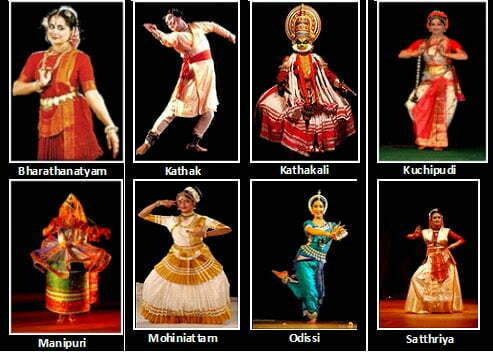Top 10 Classical Dances Of India
Embarking on Tradition: Top 10 Classical Dances Of India

India, a land rich in cultural diversity, boasts a plethora of classical dance forms that have evolved over centuries, each carrying its own unique charm, history, and significance. These classical dances are not merely artistic expressions but also reflections of India's deep-rooted traditions, mythology, and spirituality. Here, we delve into the enchanting world of Indian classical dances, celebrating the top 10 that continue to captivate audiences worldwide.

-
Bharatanatyam: Originating from Tamil Nadu, Bharatanatyam is one of the oldest classical dance forms in India. Characterized by its intricate footwork, graceful movements, and expressive gestures, Bharatanatyam often narrates stories from Hindu mythology. It requires rigorous training and mastery of techniques like adavus (basic steps), abhinaya (expressions), and mudras (hand gestures).
-
Kathak: Hailing from Northern India, Kathak is renowned for its fast spins, rhythmic footwork, and storytelling through intricate facial expressions. Initially performed in temples, it later flourished in Mughal courts. Kathak often portrays tales of love, devotion, and mythology, blending elements of Hindu and Muslim cultures.
-
Odissi: Originating from the state of Odisha, Odissi is a classical dance form characterized by fluid movements, sculpturesque poses, and intricate expressions. Inspired by temple sculptures, Odissi celebrates themes from Hindu mythology, particularly those related to Lord Krishna and the Radha. The dance form underwent a revival in the mid-20th century, preserving its ancient traditions.
-
Kathakali: Hailing from Kerala, Kathakali is a vibrant and elaborate dance-drama known for its colorful costumes, intricate makeup, and exaggerated facial expressions. It combines elements of dance, music, mime, and drama to depict stories from Hindu epics like the Ramayana and Mahabharata. Kathakali performers undergo rigorous training for years to master its demanding techniques.
-
Manipuri: Originating from Manipur, Manipuri dance is characterized by its gentle, lyrical movements, and its emphasis on spirituality and devotion. It often revolves around themes of Radha-Krishna devotion, depicting the love between the divine couple. Manipuri dance is performed in a group format, with graceful movements reflecting the serene landscapes of Manipur.
-
Kuchipudi: Hailing from Andhra Pradesh, Kuchipudi is a classical dance form that combines both dance and drama elements. It encompasses intricate footwork, quicksilver movements, and dynamic storytelling. Kuchipudi often incorporates themes from Hindu mythology and is known for its energetic and vibrant performances.
-
Mohiniyattam: Originating from Kerala, Mohiniyattam is a dance form known for its graceful, fluid movements and subtle expressions. It is characterized by swaying movements resembling the gentle sway of palm trees, evoking a sense of femininity and beauty. Mohiniyattam often portrays themes of love and devotion, particularly stories of Lord Vishnu and his avatars.
-
Sattriya: Emerging from Assam, Sattriya is one of the eight classical dance forms recognized by the Sangeet Natak Akademi. Rooted in Vaishnavism, Sattriya was traditionally performed by male monks in monasteries known as satras. It combines elements of dance, music, and theater to depict stories from Hindu scriptures like the Bhagavata Purana.
-
Bharatanatyam (Cultural Fusion): Bharatanatyam has also seen fusion interpretations, where traditional elements are blended with contemporary influences, reflecting modern themes and sensibilities. These fusions often incorporate diverse music genres, innovative choreography, and experimental storytelling, appealing to a broader audience while preserving the essence of the classical form.
-
Contemporary Interpretations: In recent years, there has been a surge in contemporary interpretations of classical dance forms, with dancers experimenting with themes, movements, and narratives. These interpretations infuse classical techniques with modern aesthetics, addressing contemporary issues and reflecting the evolving cultural landscape of India.
In conclusion, the classical dances of India are a testament to the country's rich cultural heritage and artistic legacy. Each dance form, with its distinct style and narrative, serves as a window into India's diverse traditions, mythology, and spirituality. From the ancient temples of Tamil Nadu to the serene landscapes of Manipur, Indian classical dances continue to enchant audiences worldwide, transcending boundaries and preserving the essence of India's cultural identity.

